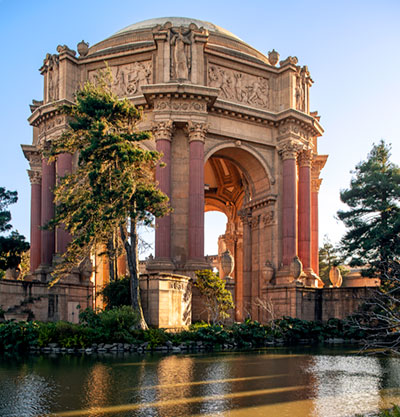National Register of Historic Places in San Francisco
Palace of Fine Arts
3301 Lyon Street
Built 1915
Rebuilt 1964-1974
The Palace of Fine Arts, conceived by Bernard Maybeck as a forgotten and overgrown Roman ruin, is perhaps the freest and most powerful example of Beaux-Arts classicism in the United States.
It was built as a temporary structure of plaster laid over wooden armatures for the Panama-Pacific International Exposition of 1915. It was rebuilt from 1964 to 1974 to be permanent.
The Panama-Pacific International Exposition of 1915 was the last and arguably most beautiful of four major United States fairs (Chicago, Buffalo, St. Louis) responsible for the City Beautiful movement of the late 19th and early 20th centuries. These fairs attempted to create ideal planned cities using the language of classical architecture. Most of the structures were built of plaster laid over wooden armatures to mimic white marble and were detailed by skilled craftsmen. Such construction was cheap and necessarily impermanent, for the expositions were designed to stand for a year or less before demolition.
Source: Adapted from the NRHP nomination submitted in 2004.

The Palace of Fine Arts is also San Francisco Landmark 88.

